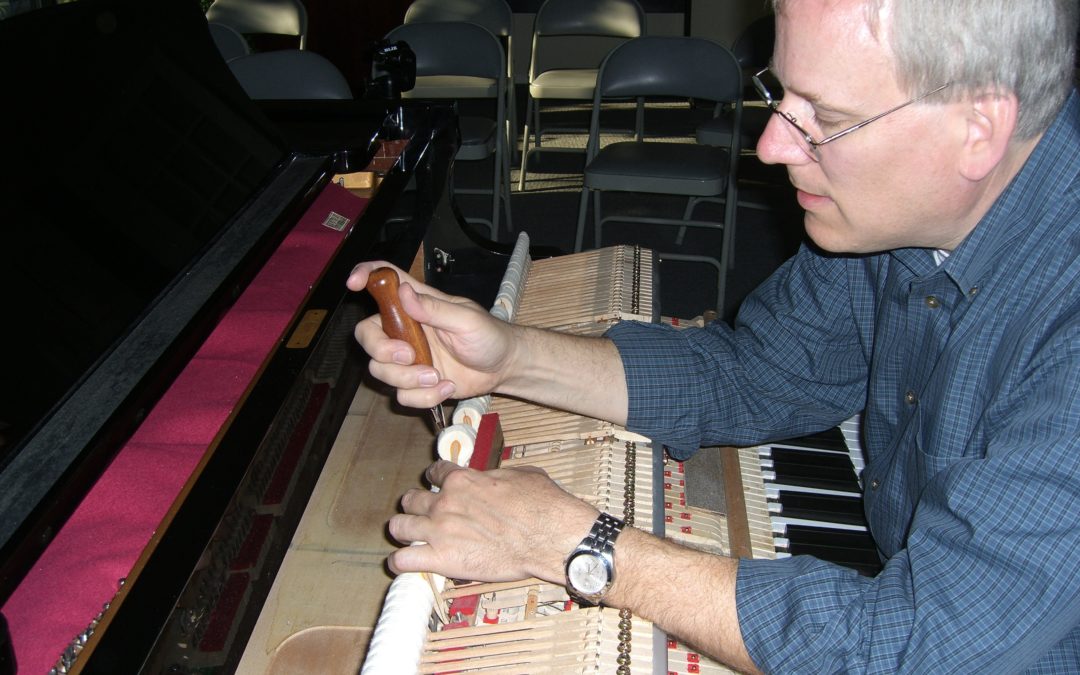Piano Voicing is the last part of a process that we use to change the voice of the piano. The intent is to improve the tone color, sonority and evenness of piano tone by evaluating each hammer and its relationship to other piano components.
Piano Regulation as described in a previous Chicago Piano Service Blog Post describes many steps of regulation and their intention to optimize the feel and sound of a particular instrument. All early steps in regulation are geared toward mechanical efficiency and true key and hammer travel. The purpose of this is to help our fingers know what to expect when we touch and play piano keys. All 88 keys need to feel the same. In voicing we want an even tonal progression as well, and a sound that pleases.
Presuming that everything in action parts regulation is correct, that no excessive friction exists that might impede hammer travel and that the shape of the felt at the hammer heads are all correct, we then might choose to do any or a combination of the following:
- Voice by needles
- Voice by ironing
- Voice by lacquer or liquid hardener Voice by steam
Voicing also has to do with the level of string unisons and spacing, and proper downbearing, which involves the relationship of the string to the treble and bass bridges and overall crown of the soundboard. There is much more to piano voicing than a few pokes with needles or applying a few drops of liquid hardener to each piano hammer. Thoughtful piano technicians will save those steps for last and will also tune the piano prior to any traditional voicing procedures.
Jeffrey Cappelli, RPT


